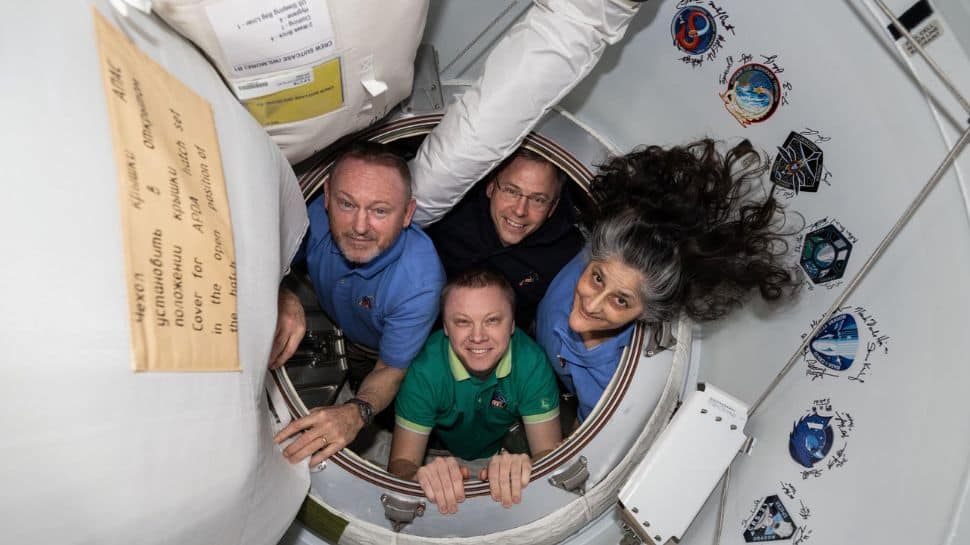NASA astronauts Sunita Williams and Butch Wilmore have begun a 45-day rehabilitation program,e to help them adapt to Earth’s gravity after spending nine months in space. The duo returned early Wednesday (Indian time) aboard SpaceX’s Crew-9 mission, splashing down off the coast of Florida. Following their extended stay aboard the International Space Station (ISS), the astronauts will now undergo physical reconditioning to counteract the effects of prolonged weightlessness.
Astronauts returning from space often experience physiological changes, including fluid shifts causing puffy faces, muscle atrophy leading to chicken legs, temporary height increase, and reduced bone density. Microgravity affects various aspects of an astronaut’s body, including aerobic capacity, muscle strength, endurance, stamina, balance, coordination, bone density, and neuro vestibular function.
The Astronaut Strength, Conditioning, and Rehabilitation (ASCR) specialists have implemented a structured reconditioning program aimed at restoring physical health. The rehabilitation process begins immediately upon landing and involves two-hour daily sessions, seven days a week, for 45 days. The program is customised for each astronaut, based on test results, medical status, and mission roles.
The rehabilitation is divided into three phases. The first phase starts on landing day and focuses on mobility, flexibility, and muscle strengthening. The second phase incorporates proprioceptive exercises and cardiovascular training, while the third and longest phase prioritises functional development. Past cases have shown that astronauts often regain and sometimes even improve upon their pre-flight physical condition after completing this program.
Williams and Wilmore’s prolonged stay in space was unplanned. They launched aboard Boeing’s Starliner on June 5 last year for what was supposed to be an eight-day mission. However, technical issues with the spacecraft’s propulsion system forced it to return without them, extending its stay aboard the ISS. Their situation gained widespread attention, sparking debates about space travel safety and even political discussions.
The return process began after Crew-10 arrived at the ISS on Sunday, allowing Williams, Wilmore, NASA’s Nick Hague, and cosmonaut Aleksandr
Gorbunov to begin preparations for their journey home. Seventeen hours after departing the ISS, their SpaceX Dragon capsule safely splashed down at 3:27 a.m. IST. Following their retrieval from the capsule, they were immediately sent for medical evaluations before starting their rehabilitation.

